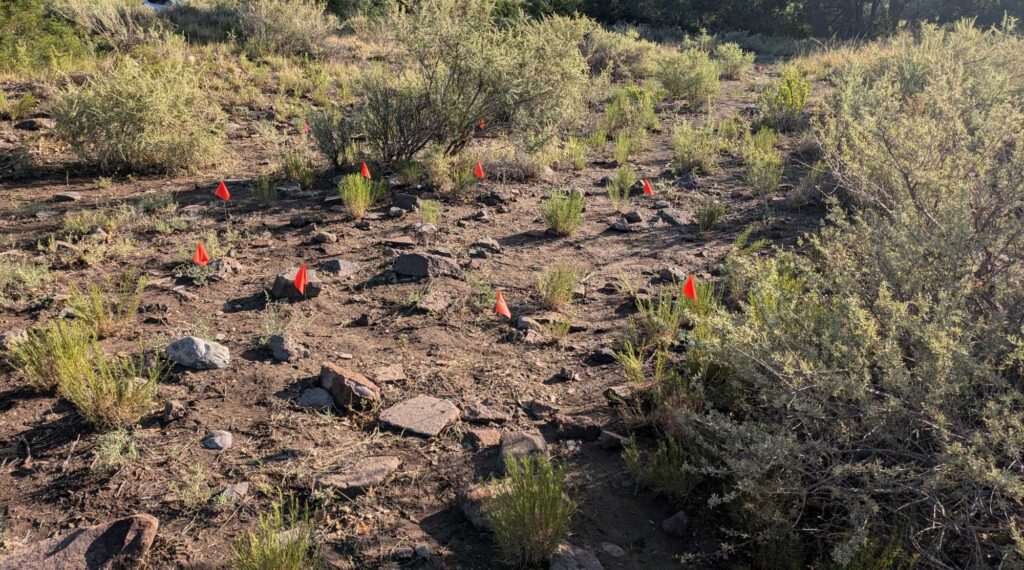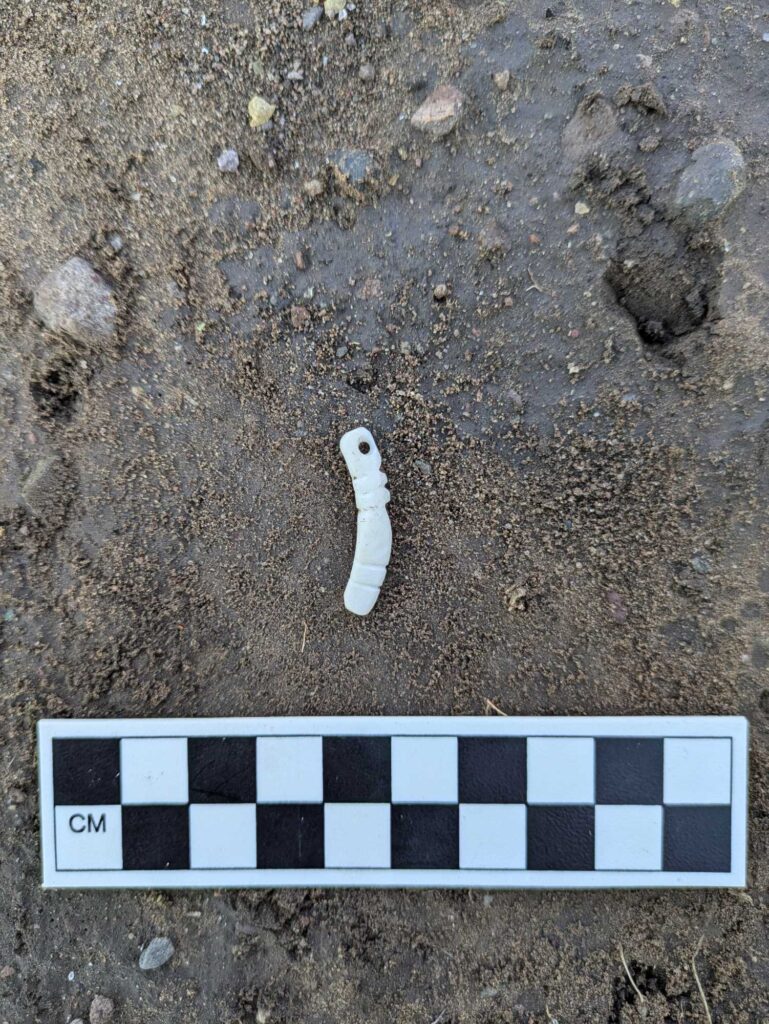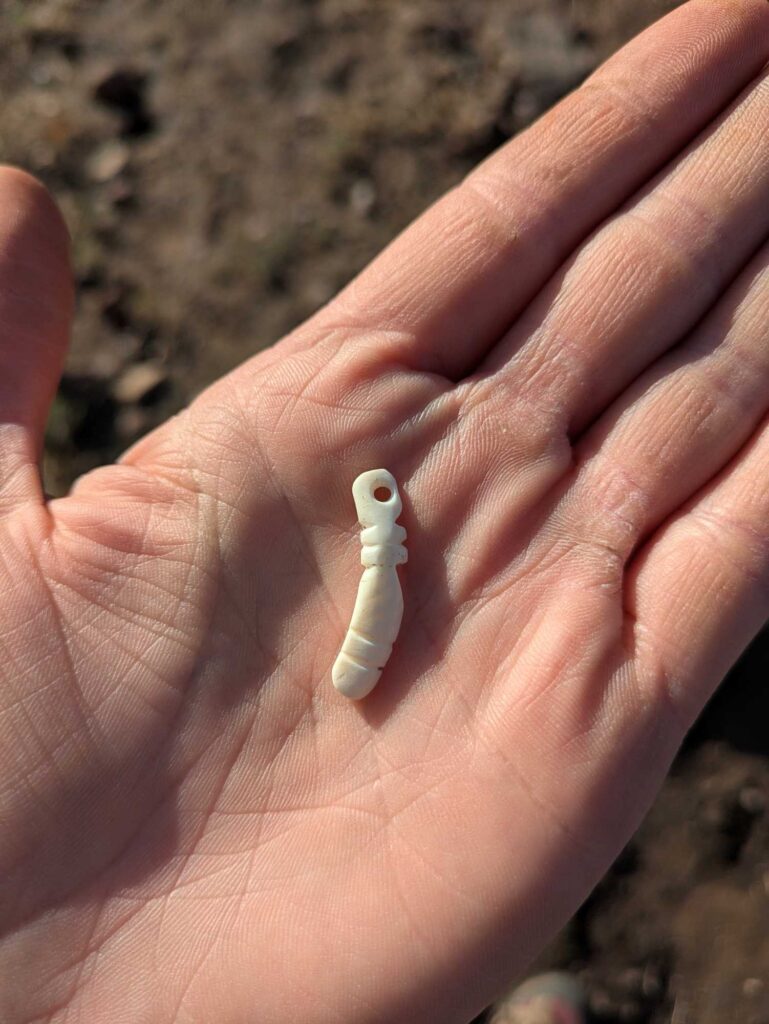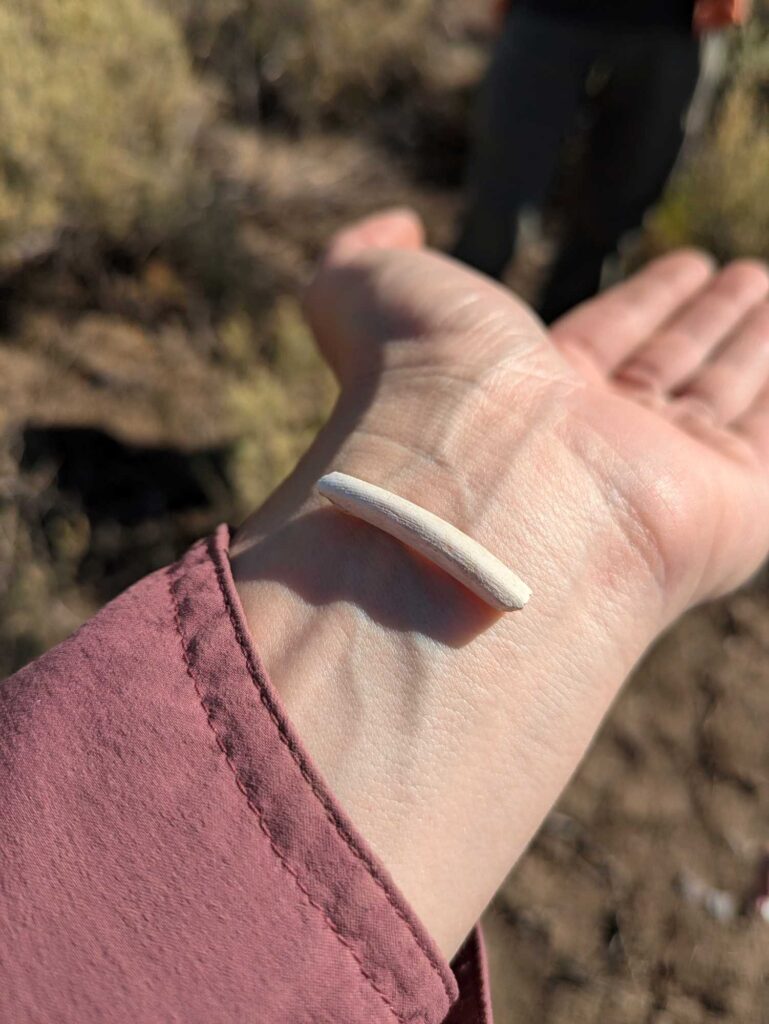- Home
- >
- Preservation Archaeology Blog
- >
- Archaeological Survey at NAN Ranch
(July 3, 2024)—For the past week, I have had the opportunity to explore the Chihuahuan Desert at NAN Ranch in Faywood, New Mexico, as part of the field survey rotation during the 2024 Preservation Archaeology Field School. Our group has learned how to conduct archaeological pedestrian survey by walking the landscape in parallel transect lines spaced 15 meters (about 50 feet) apart to identify cultural resource sites in the area.
So far, we have recorded three new sites at NAN Ranch and learned how to properly record them on a Laboratory of Anthropology (LA) site form for the State Historic Preservation Office (SHPO). I am now able to describe a site, including its physical setting, features, array of artifacts, and condition, as well as establish site boundaries, map the site using GPS equipment, and document the site by taking photos.

One of the sites my group had the chance to record is multicomponent (meaning that different eras are represented there) and includes the remains of a Classic Mimbres masonry pueblo and a homestead dating to the late 1800s/early 1900s. This site had a wide array of artifacts to practice our skills with. On the surface, all we could see of the Mimbres pueblo was a rock alignment resembling a blocky U or C shape. We believe it may be possible that people built the Mimbres pueblo on top of a previous pithouse cluster based on the presence of certain artifacts, such as San Francisco red ware ceramic sherds in conjunction with sherds from both the Mimbres Transitional phase and the Classic Mimbres period. The San Francisco red ware sherds can generally be dated from 550–950 CE, before the Classic Mimbres period when the construction of masonry pueblos replaced semi-subterranean pithouses (1000–1130). We found a variety of ceramic sherds, lithics (stone tools and manufacturing debris), ground stone, and even items of personal adornment.

Of all of our finds, I was most excited about two shell bracelet fragments and a shell pendant the crew found at the site. The bracelet fragments and pendant were all fashioned out of Glycymeris, which most likely originated from the Gulf of California. I love these artifacts because they speak to a commonality people across time and different cultures have always shared—a fondness and admiration for jewelry and personal expression. The pendant was almost feather-shaped, and would have possibly hung from a necklace.

Our field school group also saw a shell bracelet fragment similar to this at a Hohokam site in Tucson, Arizona, so these must have been a highly prized commodity to people who created the Hohokam and Mimbres archaeological patterns, and they probably signify trade between the groups. I have seen whole Glycymeris shell bracelets in museums, and I could picture myself wearing them. It is amazing how one small piece of shell can make you feel so connected to the distant past!

Explore the News
-
Join Today
Keep up with the latest discoveries in southwestern archaeology. Join today, and receive Archaeology Southwest Magazine, among other member benefits.